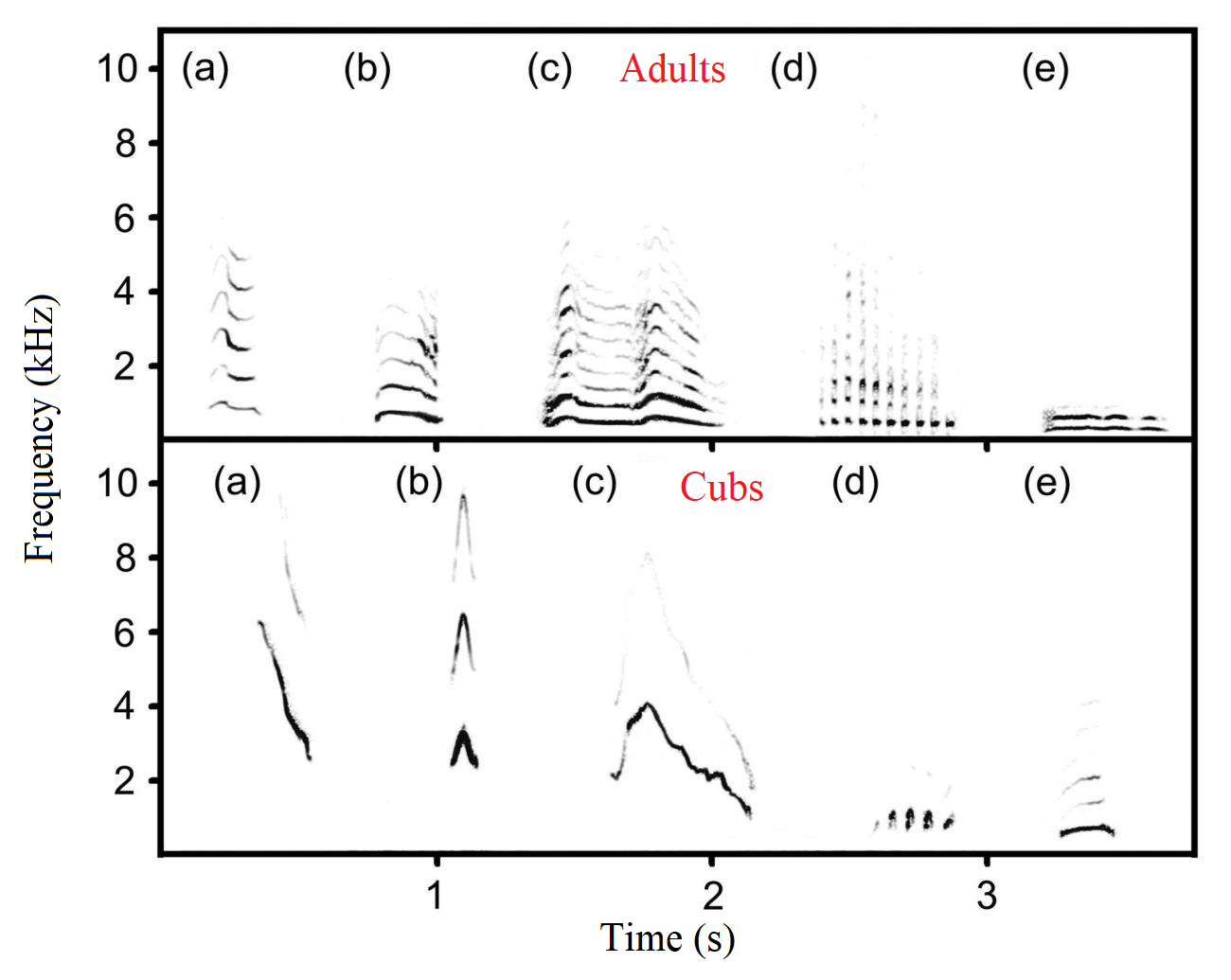
Researchers from the A.N. Severtsov Institute of Ecology and Evolution of the Russian Academy of Sciences (IEE RAS), the Mara-Meru Nature Reserve in Kenya, and Lomonosov Moscow State University have described for the first time the vocal repertoires of adult and cub wild cheetahs from Kenya. Previously, cheetah vocal repertoires had only been studied in captivity: in zoos and breeding centers. In this study, the acoustic cues and situations in which 12 call types (7 tonal and 5 non-tonal) were used were examined for adult cheetahs over 4 years of age and cubs under 6 months of age. The study found that wild cheetahs use the same set of 8 basic call types previously described for captive cheetahs. In addition to these 8 call types, the researchers described 4 additional call types that were observed in the wild in situations that were either rare or not encountered at all in captivity.
The contexts in which cheetahs used different types of vocalizations were similar in the wild and in captivity, with the exception of meowing. While meowing is relatively rare in the wild, it is the most common vocalization in captivity (47.6% of all vocalizations). In the wild, cheetahs meow during non-aggressive, close-range interactions, while in captivity, they primarily use meowing to communicate with their keepers while awaiting food and release for a walk. It is possible that cheetahs use meowing to manipulate their keepers, similar to how domestic cats use meowing to manipulate their owners.

The spectrogram illustrates 5 tonal types of calls of adult (top) and cubs (bottom) cheetahs, each sound belonging to a different animal or litter of cheetahs: (a) chirp; (b) meow; (c) scream; (d) chatter; (e) hoot.
It was found that during cub maturation, the fundamental and dominant frequencies of seven tonal call types increased, while the duration of seven tonal and three non-tonal call types either remained unchanged or increased. In calls with a rhythmic pulsation (crackles, growls, and purrs), the pulsation frequency was the same in cubs and adults. The acoustic structure of the calls differed slightly between adult males and females. Only in three high-frequency tonal call types (chirps, meows, and howls) were the fundamental and dominant frequencies lower in males than in females, while the duration did not differ between the sexes for any call type. A distinctive feature of cheetah calls from other felid species was the unexpectedly very high fundamental frequency of some tonal call types, in both cubs and adults. These calls were significantly higher-pitched than those of domestic cats, which are many times smaller than cheetahs.
The results of the study were published in the Q1 journal Mammalian Biology: Chelysheva E.V., Klenova A.V., Volodin I.A., Vasilieva N.A., Volodina E.V. "Vocal repertoires of wild-living cub and adult cheetahs (Acinonyx jubatus): call types, acoustic parameters, and contexts." Mammalian Biology, 2025, v. 105, no. 4, pp. 499-516.
Related materials:
RAS: "Researchers have described the vocal repertoire of adult and cub cheetahs in the wild"
Science.Mail: "Russian scientists have studied the cheetah 'language'"
